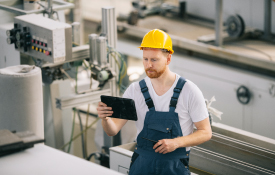No matter how much your industry automates, the reality is that your workforce is critical. That has never been clearer than during the current labor shortage. The unique and ever-evolving pandemic landscape – and the reality that many retiring workers aren’t being replaced in the
labor pool – is keeping organizations everywhere seriously short-staffed, struggling to fill vacancies and anxiously on the edge. With businesses already patching together operations with skeletal crews, a single worker illness or injury could grind the business to a halt – and hence, ensuring workforce safety takes on a whole new level of urgency.
Moreover, in this seller’s market for labor, going further to protect and support workers is proving to be the ‘secret sauce’ for companies that are successfully filling job vacancies. Workers are looking for more, not just in terms of wages, but also flexibility, skills and career development opportunities, and safety. That last factor is particularly critical in industries like manufacturing
and construction, where jobs have traditionally involved greater safety risks.
Just as with and construction, where jobs have traditionally involved greater safety risks. Just as with front-line workers in other industries, the ‘Great Reset’ of the pandemic has workers in manufacturing and construction increasingly question whether these higher safety risks are worth it. This is one key reason that these industries have been significantly slower to bounce back to pre-pandemic employment levels — even when compared to other industries that are experiencing labor shortage like retail and hospitality.
According to a 2020 report from the Bureau of Labor Statistics (the most recent data available), construction workers reported 74,520 nonfatal injuries in the US in one calendar year, while manufacturing (across all sectors) accounted for 135,900. Together, these industries account for nearly 18% of all reported nonfatal injuries. The reality is that completely eliminating workplace injuries is near-impossible in these high-risk fields – these aren’t desk jobs, they’re the people that physically make our world. But emerging technologies are paving the way to drastically improved workforce safety – and giving forward-thinking companies a major fillip in terms of recruiting and retaining workers.
Download white paper to know more

